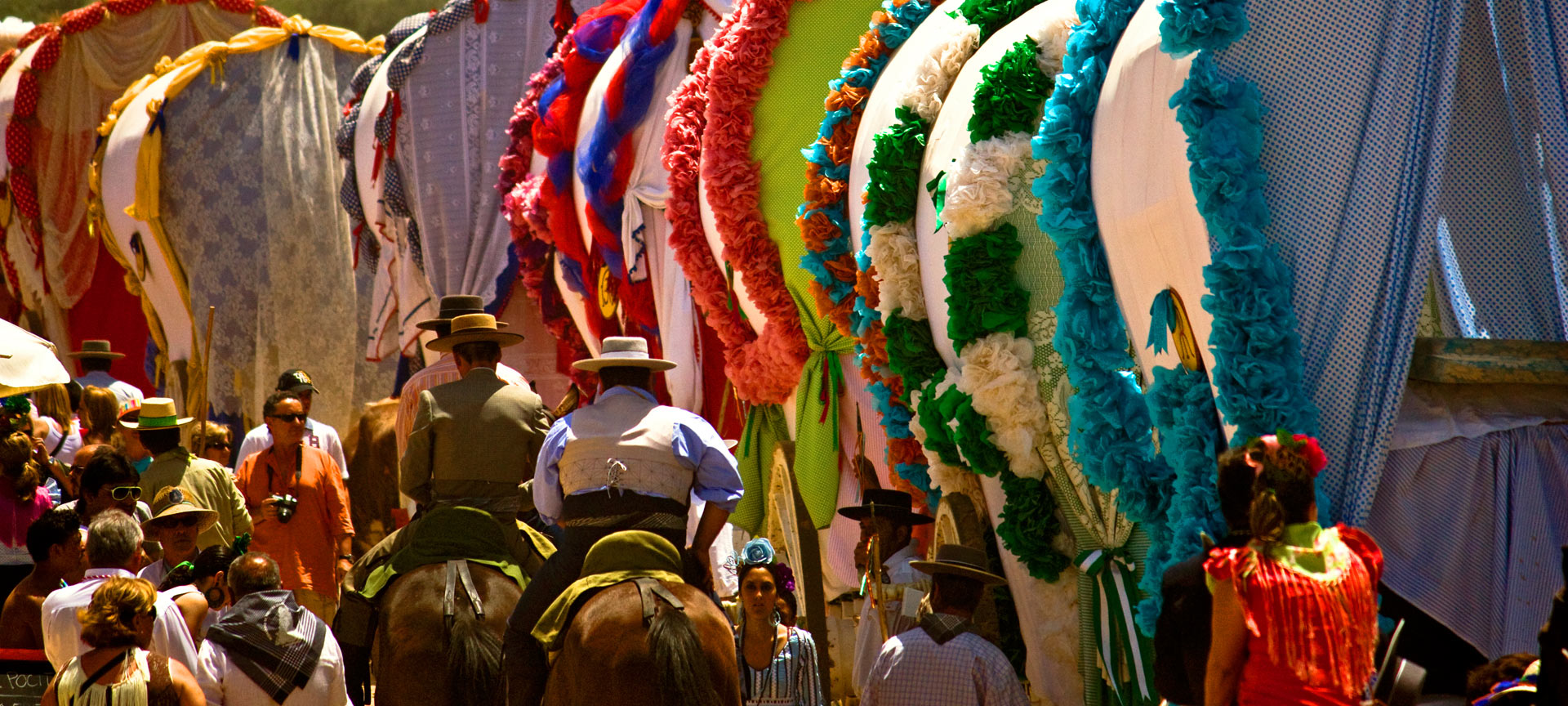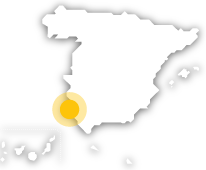More than one million people and close to one hundred different religious associations enjoy the wonderful festive atmosphere of this pilgrimage to the village of El Rocío.
The celebration combines religion and fiesta, and is held 50 days after Easter. Hundreds of thousands of people come from all over Spain, and even abroad, to make this annual pilgrimage to the shrine of La Blanca Paloma in the village of El Rocío, 17 kilometres from the town of Almonte (Huelva province).
Over the week before, the various brotherhoods dedicated to the Virgin of El Rocío set out from their headquarters in Huelva, Seville, and Cadiz, among other provinces, in order to arrive in the village of El Rocío by Saturday and take part in the events which continue until Monday. The most traditional way to make the pilgrimage is on horseback, in a horse-drawn cart or on foot, wearing in traditional flamenco dress. By day, the brotherhoods advance in high spirits, singing the typical flamenco 'cantos' and 'coplas', while by night they camp out and stage parties around bonfires, singing, dancing and sharing food and drink into the early hours. There are four main routes: the Sanlúcar route, which runs through the Doñana National Park and is taken by pilgrims coming from the province of Cadiz; the Los Llanos route –the oldest– which runs from Almonte; the Moguer route, used by those coming from Huelva province; and the Seville route, the most popular route with other brotherhoods from Spain and abroad.
As they arrive at the village of El Rocío, the pilgrims pitch their camps and await the arrival of the remaining brotherhoods. On the Saturday there is a procession where they appear with the simpecado (the pennant of the brotherhood) before the statue of the Virgin Mary, while the church bells ring. On the Sunday there are various religious acts, and that night nobody sleeps in anticipation of the weekend's most exciting moment: the 'salto de la verja', or 'jumping the fence', when the people of Almonte scale the altar railings to bring the statue of the Virgin out of the shrine and parade it around the village on Monday morning. Once the procession is over, the brotherhoods start the return journey with their minds already on next year's pilgrimage.


